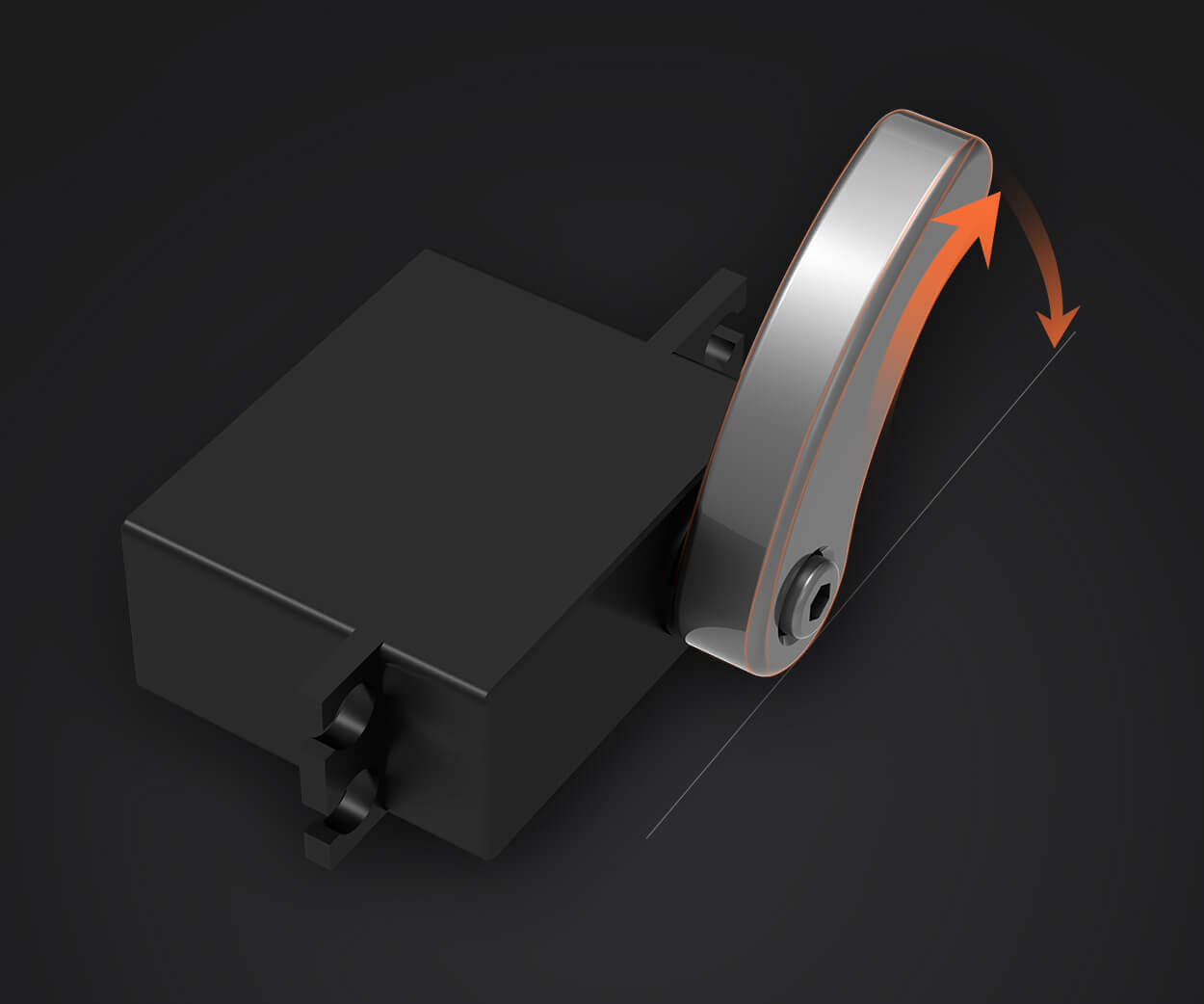Certainly! Here is the first part of the soft article themed around "servo motor 360 degrees."
In the realm of modern automation and robotics, few components have ignited as much innovation and versatility as the servo motor. Among the many variants, the 360-degree servo motor stands out as a game-changer, offering seamless, continuous rotation rather than limited positional movement. This seemingly simple shift in capability opens the door to countless possibilities—blurring the lines between traditional servo functionality and the needs of complex, dynamic systems.

Understanding the 360-degree servo motor
Most servo motors are designed to rotate within a specified angle—often 180 degrees—making them suitable for precise control applications like robotic arms, camera gimbals, and precision machinery. However, the 360-degree servo motor redefines this boundary by providing uninterrupted rotation, effectively allowing objects to spin endlessly without stalling or position limitations. It’s akin to transforming a fixed-range steering wheel into a steering system that can turn infinitely—this flexibility grants engineers and hobbyists alike a powerful tool to craft more fluid, capable, and intuitive mechanisms.
Fundamentally, a 360-degree servo isn't truly "continuous" by design—the key lies in how it’s controlled and configured. Many of these servos incorporate internal mechanisms, like modified circuitry or gear systems, to enable continuous rotation. Instead of moving to a specific angle and stopping, they respond to control signals that dictate speed and direction, similar to a motor in a robotic wheel or conveyor system.
The mechanics behind continuous rotation
Traditional servos interpret control signals as position commands. When you send a signal, the servo's internal motor strives to reach and hold a certain angle. But in a 360-degree or continuous rotation servo, the internal feedback system is altered or bypassed, so instead of positioning, the servo interprets signals as speed commands.
This transformation often involves removing the feedback potentiometer or electronically reconfiguring the control circuitry. As a result, the motor responds proportionally: a certain control pulse width results in forward rotation at a specific speed, a different pulse causes reverse movement, and no pulse might mean a stop. This makes the 360-degree servo an exceptional candidate for applications that require continuous, smooth motion over a full circle without the constraints of limited angles.
Advantages of 360-degree servo motors
Let's delve into why 360-degree servo motors are capturing the imagination of engineers, hobbyists, and industry experts:
Infinite Rotation – No Limits Unlike standard servos, these motors can rotate endlessly, enabling more ambitious mechanical designs. Imagine robotic wheels, pan-tilt mechanisms, or conveyor systems that require unrestricted movement—these servos excel here.
Precise Speed Control Because control signals dictate rotational velocity rather than position, a 360-degree servo offers excellent speed regulation. This is particularly useful when uniform object rotation or continuous movement is vital for the task, like in robotic arms or rotating platforms.
Simplicity over Complex Gearing Systems Traditional continuous rotation mechanisms often involve complex gearboxes or stepper motors. In contrast, 360-degree servos integrate seamless control, reducing mechanical complexity and maintenance needs.
Compatibility and Flexibility They are compatible with standard RC controllers, microcontrollers, and industrial control systems, making integration into existing projects straightforward. Plus, custom control algorithms can provide nuanced behaviors suited for specialized tasks.
Applications transforming industries
The wide-ranging applications of 360-degree servo motors continue to grow as technology advances. Here are some standout sectors leveraging these dynamic components:
Robotics Robots often require fluid limb or wheel movements, and 360-degree servos can serve as the foundation for mobile robots, robotic arms, or even humanoids. Their ability to provide endless rotation facilitates natural movement patterns that mimic real-world motion.
Camera and Gimbal Systems Smooth, unlimited panning or tilting in camera stabilization devices relies heavily on these servos. They allow for effortless, continuous rotation, ensuring professional-quality stabilization and dynamic filming.
Automated Manufacturing In factory automation, continuous rotation servos drive conveyor belts, rotating arms, and indexing systems. Their reliability and smooth operation are crucial for maintaining high throughput without interruption.
Aerospace and Defense Precise and reliable continuous motion control systems are vital in drone camera gimbals, missile guidance, or satellite positioning, where perfect rotational control is mandatory.
Home Automation & DIY Projects Enthusiasts use 360-degree servos for custom projects, from automated pet feeders to rotating art displays. Their versatility makes them a favorite among inventors craving limitless movement.
Key specifications to consider
When selecting a 360-degree servo, a few technical factors help determine suitability for your project:
Voltage and Current Ratings Ensure the servo's operating voltage aligns with your power source. Higher currents indicate robust torque capabilities, essential for heavy loads or demanding applications.
Speed and Torque Matching the servo's speed and torque output with your mechanical requirements guarantees reliable performance. Some servos excel at rapid rotation, while others are built for sustained torque.
Control Compatibility Confirming that control signals from your microcontroller or remote system are compatible is crucial. Many models accept PWM signals, simplifying integration.
Size and Form Factor Depending on your assembly constraints, selecting a servo that fits within available space without sacrificing performance is vital.
Durability and Environment Resistance Industrial or outdoor use demands waterproofing, dust resistance, or enhanced mechanical robustness. Choose a servo with appropriate ingress protection ratings for harsh environments.
This covers the essential foundation and excitement around 360-degree servo motors. Ready for the next part? We'll explore innovative advancements, troubleshooting tips, and specific case studies to demonstrate their transformative power more vividly.
Kpower has delivered professional drive system solutions to over 500 enterprise clients globally with products covering various fields such as Smart Home Systems, Automatic Electronics, Robotics, Precision Agriculture, Drones, and Industrial Automation.




































